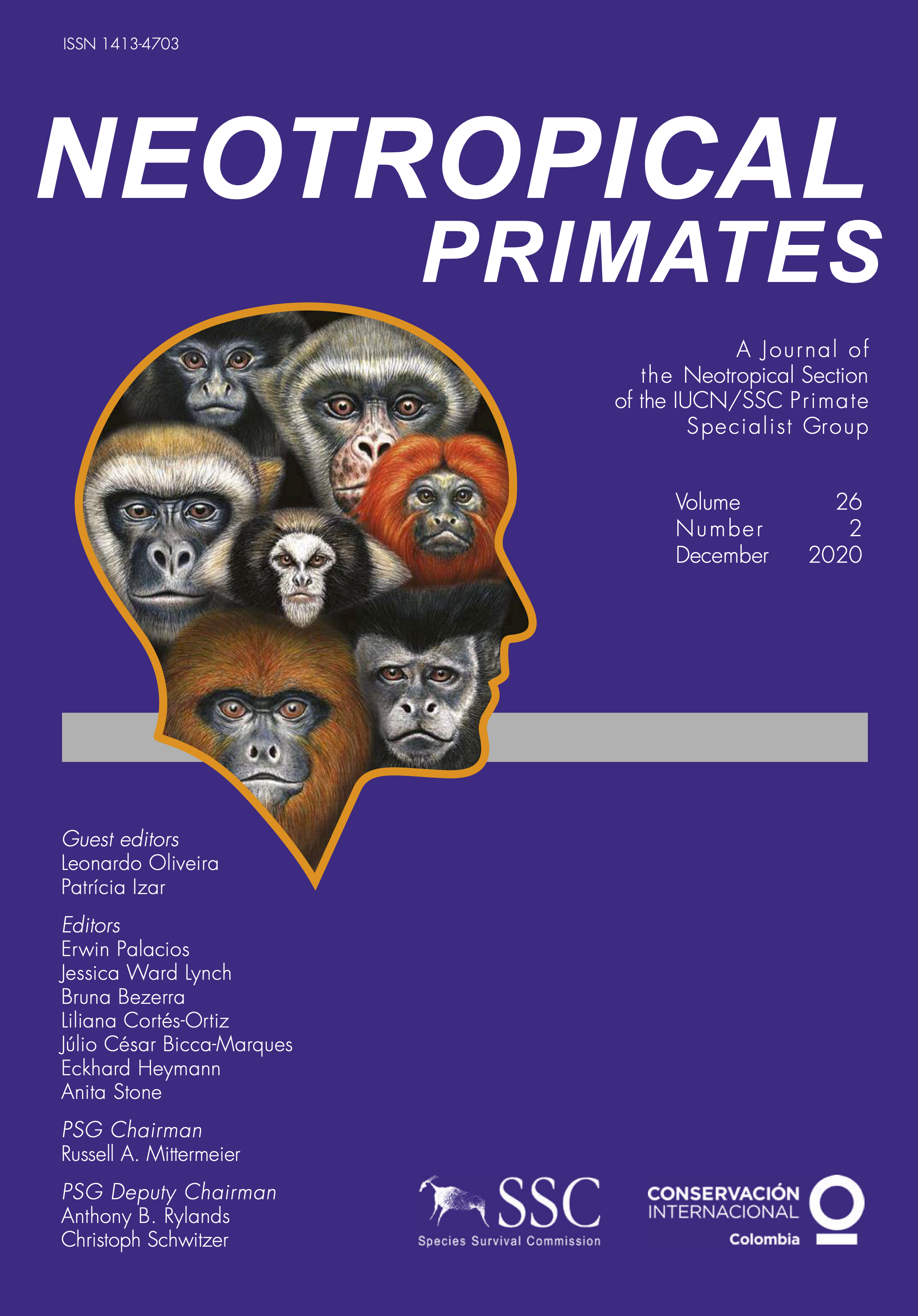Tamanho de grupo e abundância relativa de Mico emiliae na porção sul de sua extensão de ocorrência
DOI:
https://doi.org/10.62015/np.2020.v26.51Keywords:
Biodiversity, primate conservation, Neotropical, hydroelectric damAbstract
Mico emiliae is endemic to Brazil, occurring in Mato Grosso and Pará States, between the Iriri – Xingu rivers and, further south, the Teles Pires – Xingu rivers, where it inhabits lowland forests and secondary forests. Although it is classified as Least Concern according to the IUCN Red List, the southernmost populations occupy degraded forests due to fires, deforestation, illegal mining, adjacent monocultures with intense use of chemicals, roads, hydroelectric dams, and urban sprawl. Thus, it is crucial to gather demographic data on the entire extension of occurrence to design better strategies for conservation of the species. Here, we estimated three demographic parameters: group size, relative abundance (encounter rate), and density of Mico emiliae, on the right bank of the Teles Pires river - MT. From 2016 to 2018, we walked 1,192 km, in four linear transects of five kilometres, and we observed groups of M. emiliae 43 times. We observed solitary individuals, or individuals distant from their group, as well as groups up to 10, with a mean group size of 4.7±3.2 individuals. Encounter rate was from 0.38 to 0.56 (SD: ± 0.10) group/10 km, with a density for the study area of 0.24 ind/ha (CI = 0.16 to 0.33ind/ha) and 0.07group/ha (CI=0.05to0.11group/ha). We confirmed the presence of populations of M.emiliae to the south of known localities for the species. This is the first report of demographic parameters for these southernmost populations, in a region of intense forest degradation in the ecotone Amazon–Cerrado. We highlight the need for continuous population monitoring of M. emiliae in areas under varying anthropic impacts to inform urgent actions to conserve these newly found populations.

Downloads
Published
Issue
Section
License

This work is licensed under a Creative Commons Attribution-NonCommercial-ShareAlike 4.0 International License.


